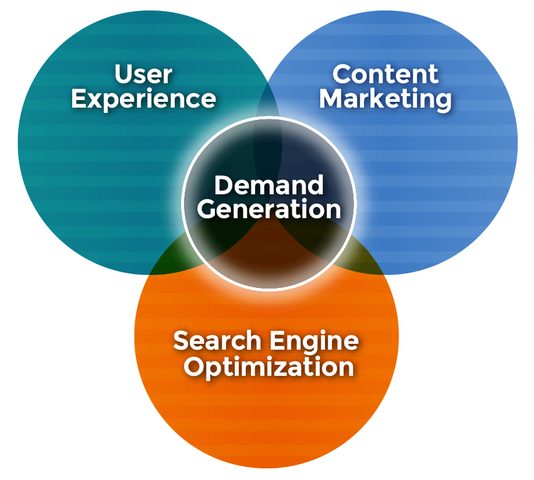With B2B buyers nearly 60% through the sales cycle before contacting a supplier and engineers investing the equivalent of more than one full workday per week consuming content, leading manufacturers are increasingly realizing the value of having an effective marketing and demand generation strategy.
Yet while search engine optimization (SEO) will improve organic ranking and can increase their leads, today (and moving forward) manufacturers are discovering that SEO alone does not make a successful strategy. Focusing on SEO alone overlooks the opportunity to maximize its value.
Historically, the main goal of SEO services was to drive more traffic to a website. Today that’s only 33% of the puzzle, as more traffic does not necessarily mean more demand for your offerings, which is the key business objective for most manufacturers. To profitably and sustainably meet and convert customer demand, it’s up to manufacturers to be visible with the right audiences, educational and persuasive at the right times, and provide an effective user experience that accelerates customers through the sales cycle, delighting them along the way. It’s a tall order.
To maximize your marketing investment and generate profitable demand, leading manufacturers are leveraging SEO, Content Marketing and User Experience to work together and drive demand. Only then will your marketing be a competitive differentiator. If your SEO strategy is to simply rank highly on relevant keywords, it’s greatly missing out on the real value of SEO and wasting marketing dollars.
What is Search Engine Optimization in 2017 and beyond?
Effective SEO is critical to helping your content be discovered. It’s focused on aligning your online presence to the latest search engine algorithm requirements, which in turn drives traffic to your website. With 75% of people never looking past the first page of search engine results, this is a critical component to a manufacturer’s demand generation strategy. In fact, 57% of B2B marketers stated that SEO generates more leads than any other marketing initiative. And it’s no wonder: 61% of marketers say improving SEO and growing their organic presence is their top inbound marketing priority.
But simply focusing on driving visitors to your site overlooks the business objective of accelerating those visitors through the sales cycle and meaningfully converting them into customers. After all, if a prospect visits your site because you rank highly for ‘precision manufacturing for aerospace’ and then quickly realizes the content on your website isn’t valuable and/or the website offers a poor user experience, they will leave the site. This in turn sends a signal to search engines that your site didn’t do a great job of addressing the query and will negatively impact your organic ranking for that search term.
Recommended for You
Webcast, October 19th: Triple Your Revenue Through Event Marketing
What is Content Marketing in 2017 and beyond?
As the associated graphic shows, Content Marketing is the intersection of what we create and what customers want. If as a manufacturer you are creating content that’s of minimal value to your customers, it’s just noise. Similarly, if manufacturers are creating content to only address customer concerns without considering how this will benefit your business, it’s charity.
Leading companies focus on the sweet spot that provides customers the education and value they’re looking for while incrementally helping their company move in the right direction.
But for maximum effectiveness, Content Marketing must work in conjunction with effective SEO and user experience. After all, if you create the most amazing content that perfectly addresses your customers’ and business needs, but if it’s not found by your target audience, it’s resources wasted.
What is User Experience in 2017 and beyond?
Have you ever visited a website and immediately been confused, annoyed or unsatisfied with the resulting experience? 79% of people who don’t like what they find on one site will go back and search for another site. Thus, as you’re establishing your Demand Generation strategy and implementing SEO and Content Marketing, it is critical that your strategy considers User Experience and Cross-channel Marketing. In the end, if you’ve invested in ranking highly for the right keywords, developed effective content for each phase of the buying journey, and then your perfect customer leaves your website and goes to a competitor due to a poor experience, you’ve lost.
SEO alone isn’t enough; Demand Generation requires optimizing and integrating SEO, Content Marketing and User Experience
As with most marketing initiatives, having a clear understanding of your target audience and their buying journey, your competitive differentiators and measuring the right analytics will help drive success. And with demand generation it’s no different. Your demand generation strategy must ensure the right audience is able to find the content they’re looking for and this content must then drive and accelerate desired business results.

